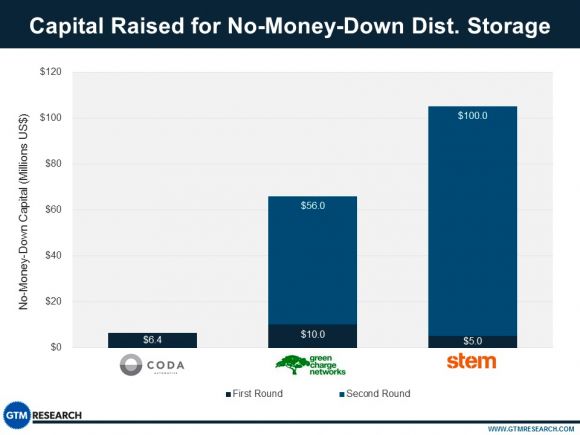Stem, the startup installing batteries in buildings to help them manage energy consumption and ease their demand on the grid, has just landed a new client willing to take its business proposition to statewide scale.
Hotel chain Extended Stay America announced this week that it’s installing Stem’s lithium-ion batteries and control systems in 68 of its hotels in California, the state with the most lucrative incentives for customer-sited energy storage.
Extended Stay has been testing one of Stem’s units at a hotel in San Jose since 2013, and plans to have all 68 California locations up and running by early next year. This could be one of the largest distributed energy storage projects to date involving multiple sites owned by a single customer.
While Stem didn’t disclose just how large each of its installations would be, the company designs its products in scales of 18 kilowatts to 54 kilowatts. That means that Stem could be installing between 1.2 megawatts and 3.6 megawatts of batteries with this project, compared to the roughly 6 megawatts of projects the startup had installed or contracted as of this summer.
Under Stem’s no-money-down leasing program, Extended Stay will pay for the systems through a monthly fee, and cover those costs through the utility bill reductions the sites will achieve by avoiding demand charges. These extra charges, incurred whenever a building exceeds a certain amount of power use at any moment in time, can add up to more than half of a commercial customer’s utility bill in markets like California and New York. Systems like Stem’s that meter building energy use, anticipate when it’s about to peak, and inject stored battery power to prevent it can theoretically put a halt to those charges.
That’s made behind-the-meter batteries for demand-charge reduction one of the first frontiers for financing packages to help decrease upfront costs for customers. Stem just secured $100 million to finance installations under this no-money-down program, though it’s far from the only behind-the-meter storage player taking this approach.
Green Charge Networks has raised $56 million for its own shared-savings program, and Coda Energy, the once-bankrupt EV maker bought by investment firm Fortress Investment Group last year, has financed about $6.4 million in installations, with plans to expand that to $25 million.

Other key behind-the-meter energy storage contenders include SolarCity, one of the first to perfect the financing model for solar installations. Working with battery supplier (and Giga factory builder) Tesla Motors, SolarCity has launched energy storage for home and commercial buildings, though it’s been less forthcoming about which customers it’s working with. Companies such as Sunverge, Solar Grid Storage and Intelligent Generation are also working on combining solar PV and energy storage, which Stem has also started working on through its new project with utility Hawaiian Electric.
Beyond the benefits for buildings, “our software has a grid analytics component,” Stem CEO John Carrington told me in a Tuesday interview. Stem will be working with Extended Stay and California utilities to find ways “to provide this suite of assets on highly constrained days” as a demand response resource that is able to ease stress on the grid during peak energy demand moments.
Stem has already been aggregating its behind-the-meter batteries for a distributed resource demand-response pilot project with Pacific Gas & Electric and California grid operator CAISO. Carrington noted that several of Extended Stay’s properties in San Francisco and San Mateo counties will be potential participants in that program.
Eventually, “we could put thousands of our systems in buildings throughout a highly congested area and serve as a virtual peaker plant,” he added. That’s the business model that AES Energy Storage is targeting with its large-scale energy storage systems, which could be cost-competitive with natural-gas-fired peaker plants, especially for regions where building new power plants is a challenge because of emissions or land-use constraints. While Stem hasn’t put together enough distributed batteries to match the scale of a peaker plant yet, Carrington noted that the company’s “gym-locker-sized” units are much simpler to install than a pad-mounted, utility-scale battery system, at least at individual buildings.
The trick for Stem, as with other distributed energy storage players, is finding the right balance between competing factors. On one side, Stem warranties these systems for ten years, and has to maintain the value of each system over that lifespan -- and that includes discharging the battery as infrequently and as shallowly as possible, in order to stretch out its useful life as much as possible.
At the same time, the company is looking to capture multiple revenue streams by putting its systems to use as building energy optimization systems, fast-reacting grid resources, and any number of other potential uses. While battery costs continue to drop, driven by mass manufacturing and technology improvements, the benefits side of the equation is still being worked out, with distributed resources just now starting to play as grid assets.



